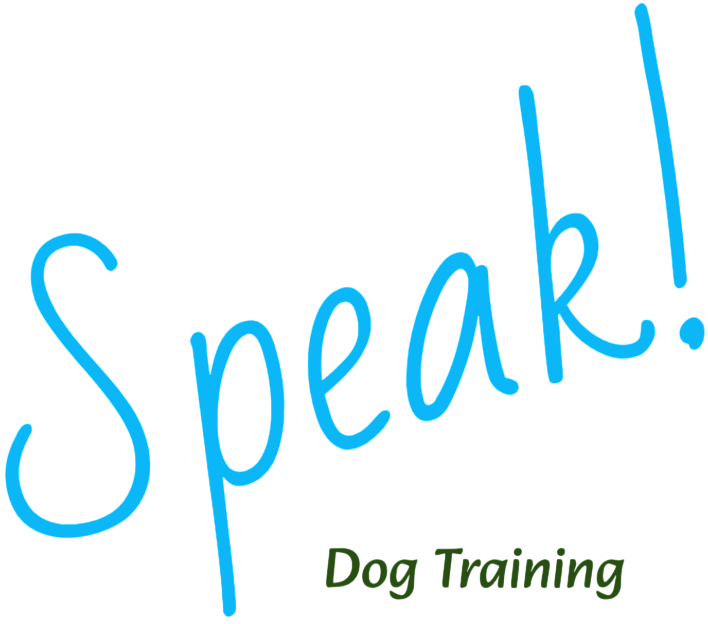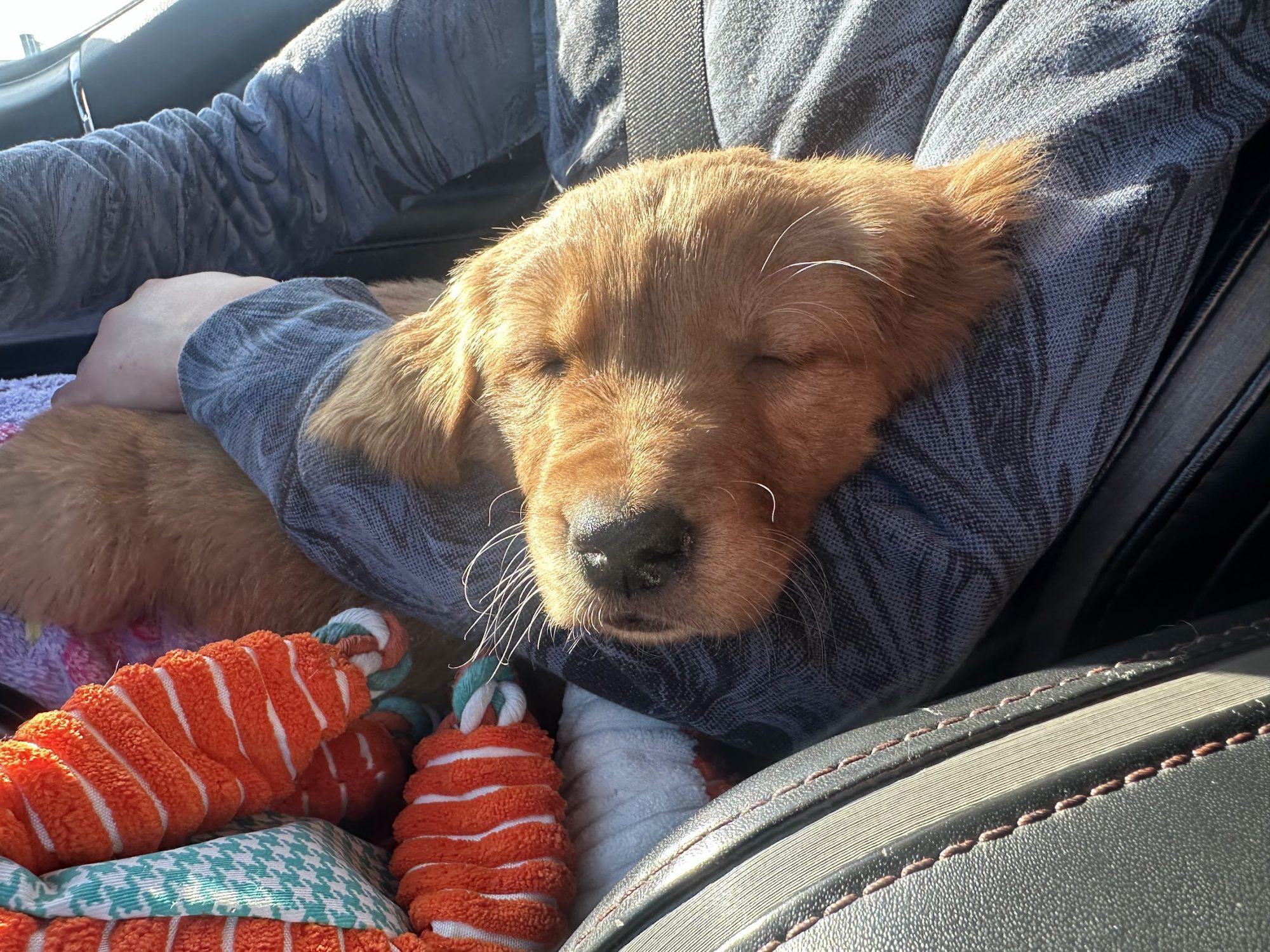I got Maeve as a seven week old puppy. This is actually against the law in some states, so check the rules in your state first.
Maeve is my first dog, and I did a lot of research beforehand. Check out my other post Before you get a Dog for more information on that. We got really lucky with Maeve. There was a litter of puppies, already born, and everyone had reserved one… and then someone backed out. It just happened to be a female, which I wanted, and also a Field Golden (I’ll write a post on Golden Retriever types later on). So, that’s how I got my puppy!
Okay. So, I did a ton of research, and I took notes on literally everything, so lucky for both me and you, I still have all the information! I watched countless youtube videos, read tons of books, looked through a million websites – and I got a plan for day 1. LIFESAVER. You never realize how much it means until you are in it!
Here was my plan for day 1:
- Tire her out
- Don’t feed her within 2 hours of bedtime
- Let her out one last time before bed
- Keep a crate near you
- Remember, it’ll be over soon
- Hang in there! You got this!
Puppies seem so magical to so many people, but really, they are a lot of work. Here are my tips for what to do for the first week of having a 7 week old puppy.
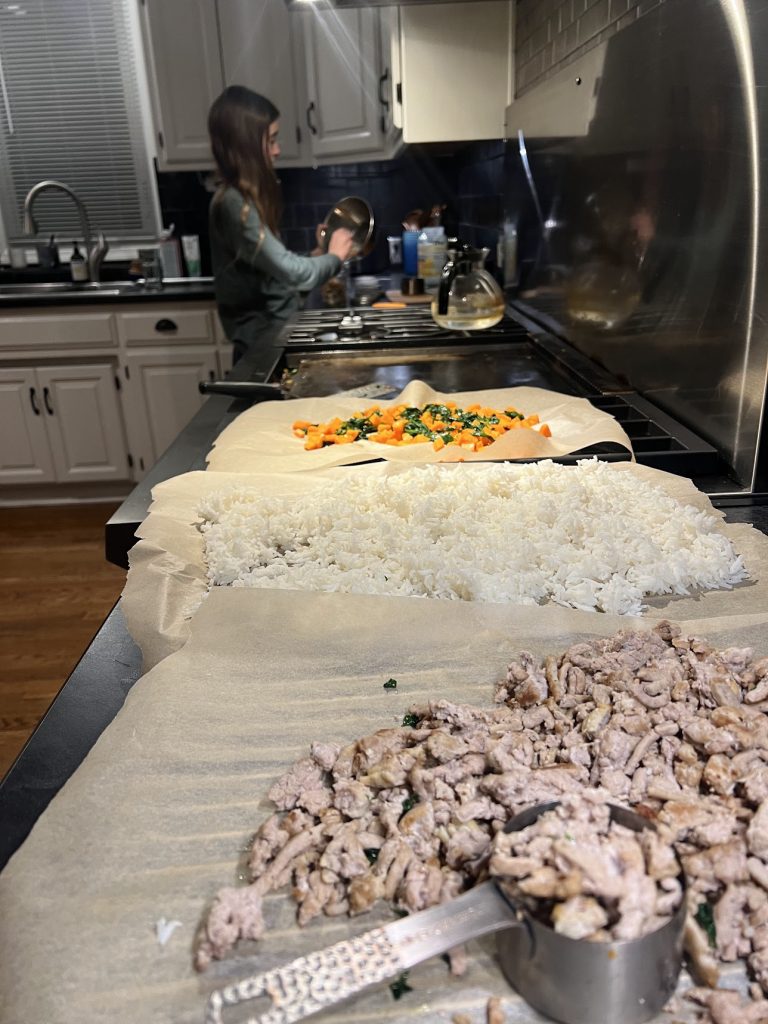
Have a Meal Plan
Know exactly what you are going to feed your dog. We started Maeve off on homemade food. We kept it really simple: rice, turkey, carrots, and spinach. We topped it off with fish oil.
There are a lot of options. You can do kibble, wet food, homemade, fresh, raw – there are so many ways to go! I highly recommend doing whatever your breeder does for the puppies, that way you don’t have to do a LONGGGGGG transition.
Puppies should eat three meals a day. If you are doing kibble, I recommend adding water to it to make sort of a stew. That way they don’t eat to fast and choke on their food (it happened to Maeve several times until I figured it out!). Don’t free feed, meaning this: don’t just keep food out for your dog. Meal times should be only at specific times, and if the food isn’t eaten in thirty minutes, throw it away. Free feeding causes obesity, which leads to joint issues, as well as other health problems.
Even if they seem SO HUNGRY, know that you are doing what is right for them. Imagine that their kibble is chocolate – if they eat too much, they’ll get sick!
If your dog is having digestive issues, one of two things is happening:
- You transitioned too fast
- They are allergic to something in their food
Maeve actually ended up being allergic to the fish oil that we put on top of her food.
I’ll write a post soon with notes on transitioning food.
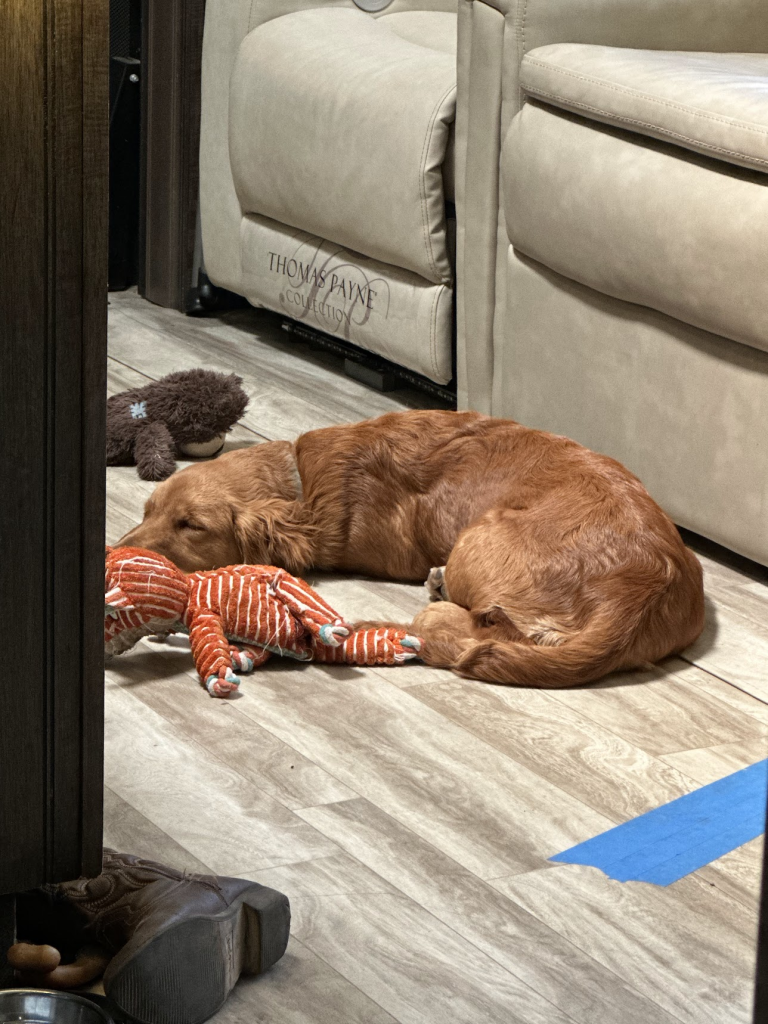
Have Toys Ready to Go
Have chew toys, tug toys – all sorts of toys ready.
I highly recommend the brand Kong. Here is a list of some great Kong toys:
- Puppy Kong.
- Squeakair Ball
- Training Dummy
- Squeezz Crackle Ball
- Puppy Goodie Bone
- Floppy Knots Fox
- Wild Knots Bear
- Puppy Teething Stick
- Squeezz Dental Stick
- Snugga Wubba
I also like the brand Benebone for good chews. She has Bacon, Peanut Butter, and Chicken. She can’t decide which is her favorite!
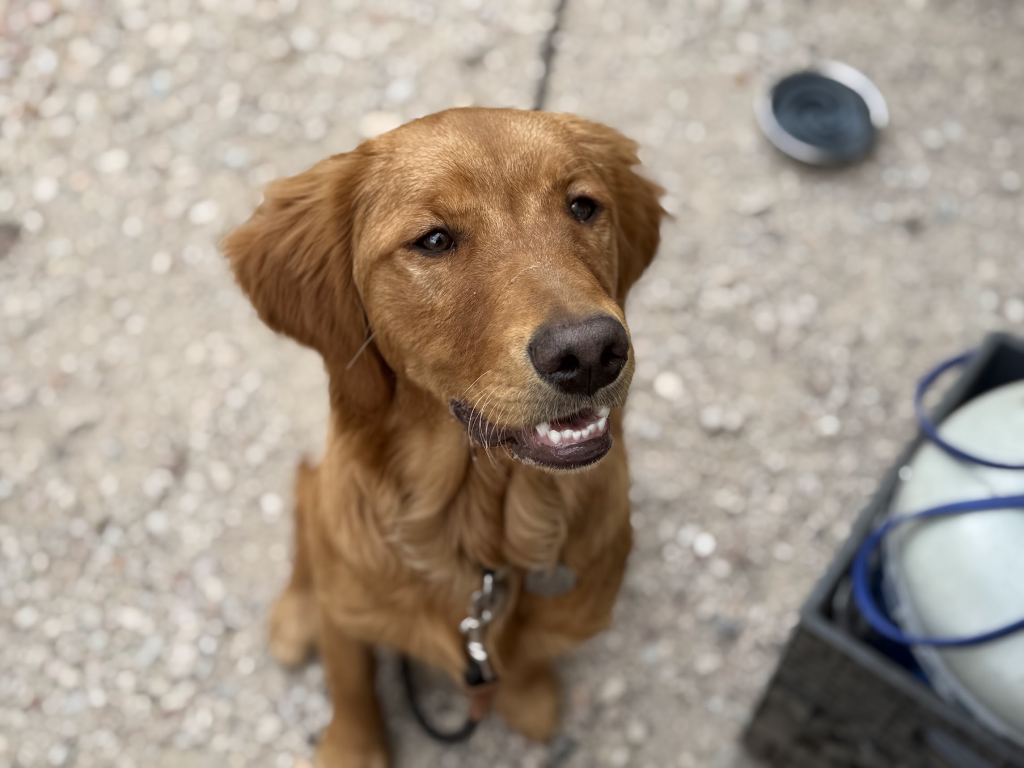
Water
Have water set out for your dog at all times – but not a lot.
When you are first potty training your dog, I would have only a half cup out at a time, so that your dog doesn’t have more than he/she should at one time, and then need to go to the bathroom – with no way to communicate, they’ll just do it on the floor. Not ideal.
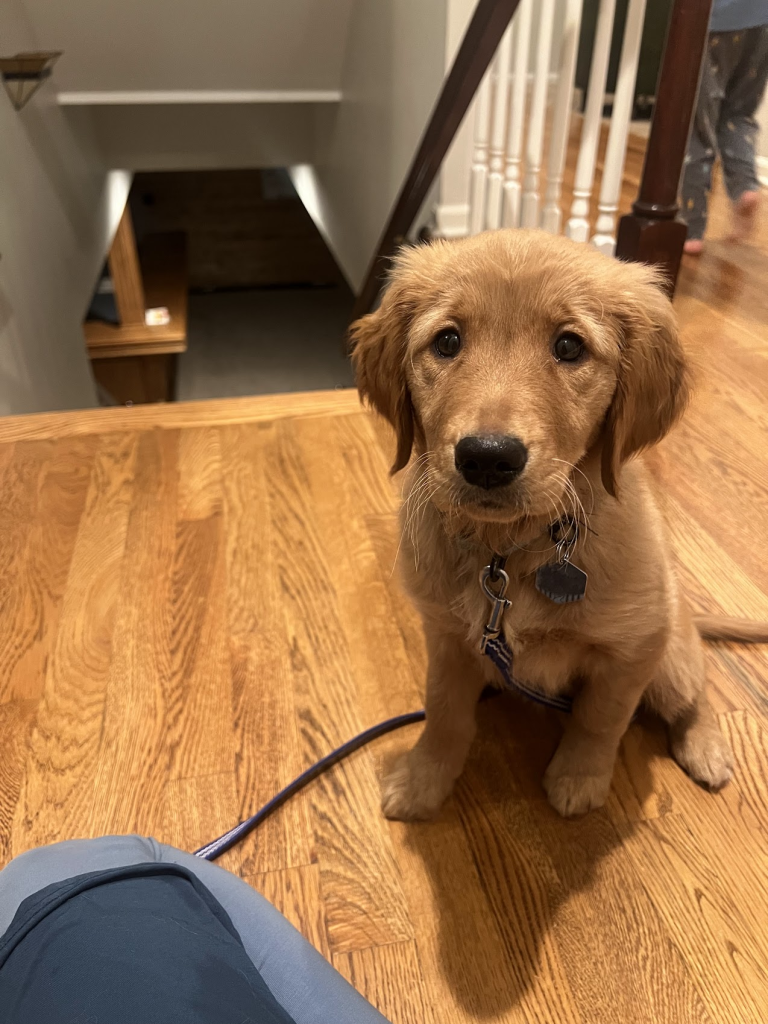
Have a Plan for Walks and Training
I trained Maeve at home, at that is certainly the easiest (and cheapest) way to go. When your puppy first comes home, obviously walks are a bad idea. Wearing a collar and leash is not natural for puppies at all. They’ll be pulling every which way, wanting to explore every direction, and without their shots, it just isn’t good for them.
One thing that you can start right away is training your dog to walk nicely on a leash. Start indoors, where there is less distractions, and practice (I’ll write a post on that later on)
At first, I had Maeve on a harness, then it became a leash and collar, and now I have her on a Gentle leader. Harnesses aren’t great for puppies – I actually would avoid using them, because it can teach some bad habits later on. I would start on a collar, and then. transition to a gentle leader, harness, or whatever you want to do.
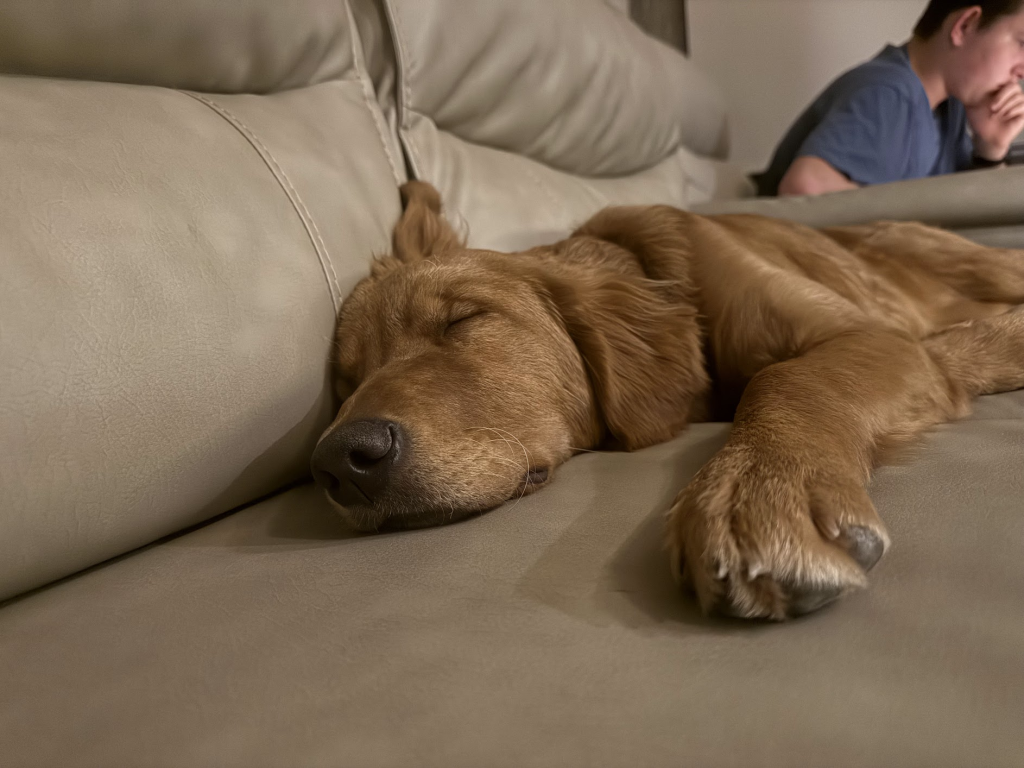
Have a Nap Space
Puppies can’t self-regulate naps. They have to be enforced. Having your puppy in a crate is the best option, that way you know they aren’t getting into trouble or going to the bathroom on the floor as soon as you turn your back. Cover the crate with a towel during the day-time, so it is dark, almost like night.
Your puppy is going to bark and whine and cry, and it really hurts and makes your heart break a little… But know that you are doing what is best for them.
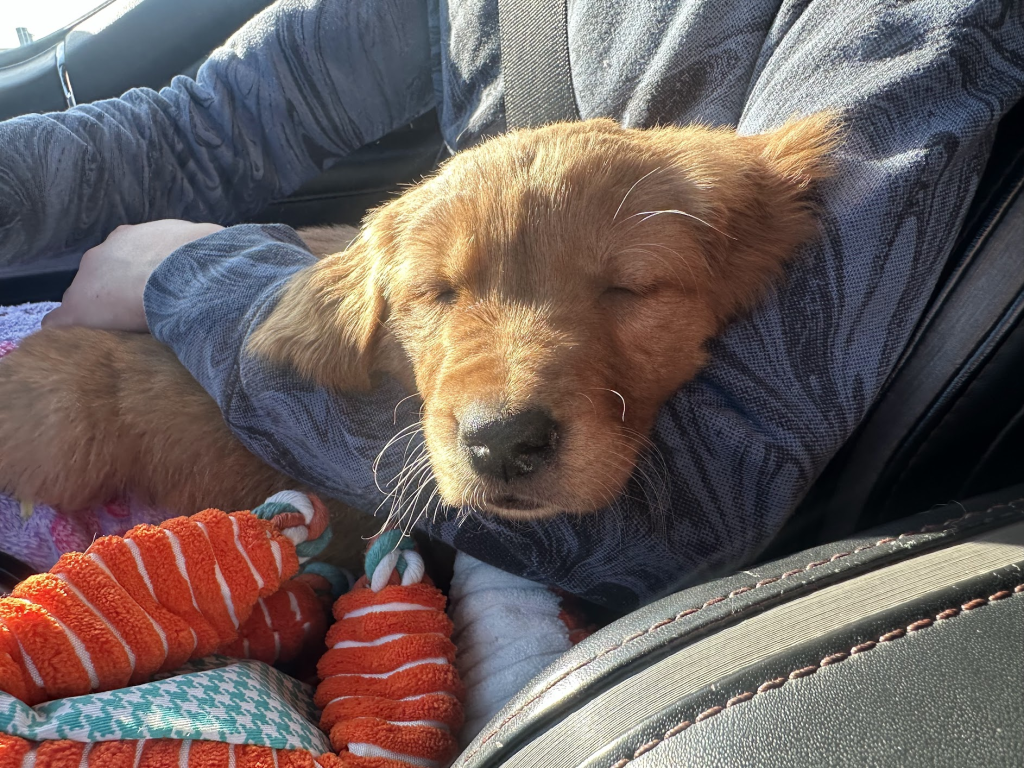
The Drive Home
Our breeder was great, we got a toy and a blanket that smelled like Maeve’s mom and siblings. If this isn’t your case, bring a towel or toy to rub on them, that way your puppy has something that smells like home.
If you have a long drive (we drove 5 hours to get Maeve) take your dog out of the vehicle to use the bathroom around every 40 minutes to an hour. Give them a tiny bit of water every now and then, to keep them hydrated, but not too much, or they might get carsick.
If your dog gets carsick, stop and let them have some fresh air.
I wouldn’t feed them unless you HAVE to. A couple treats will be okay. I wouldn’t have them in a crate – you can bring one with, if you’d like. I just let her sleep in my arms so she’d get used to my smell, my voice, and my touch. She loves to cuddle – and sleeping puppies are the best thing you can cuddle in the whole world!
